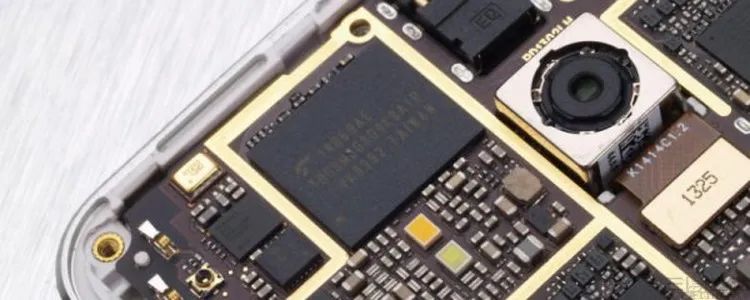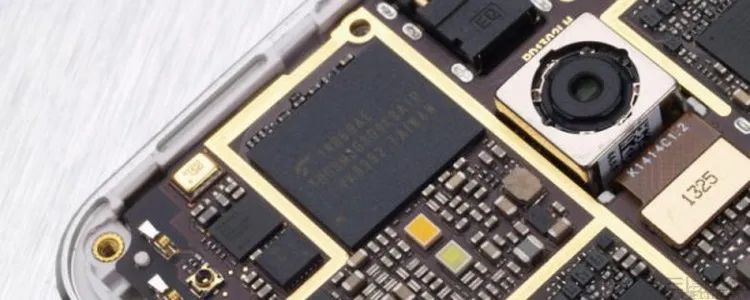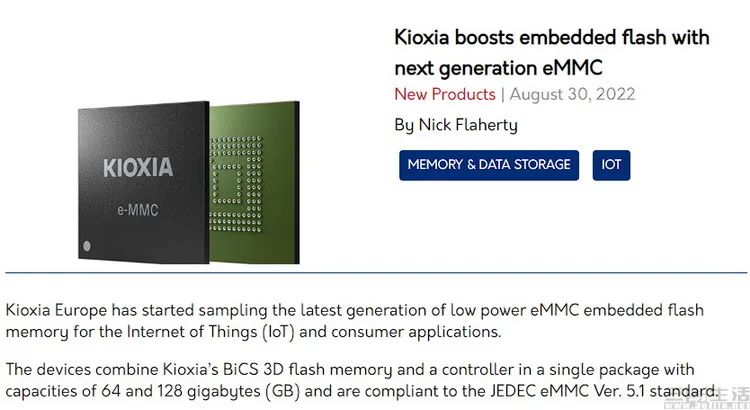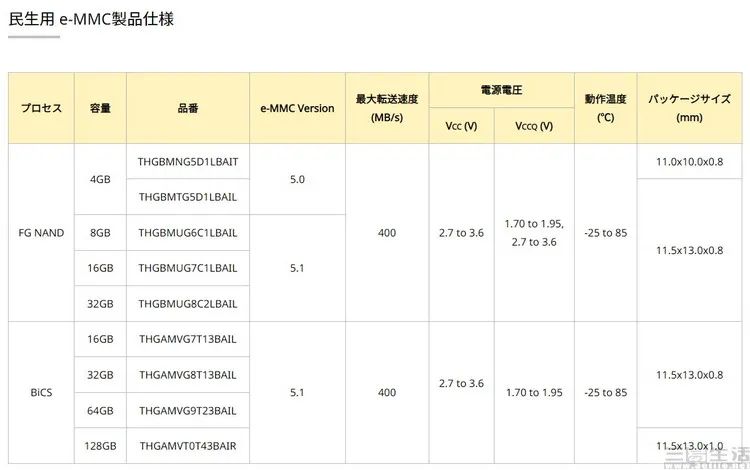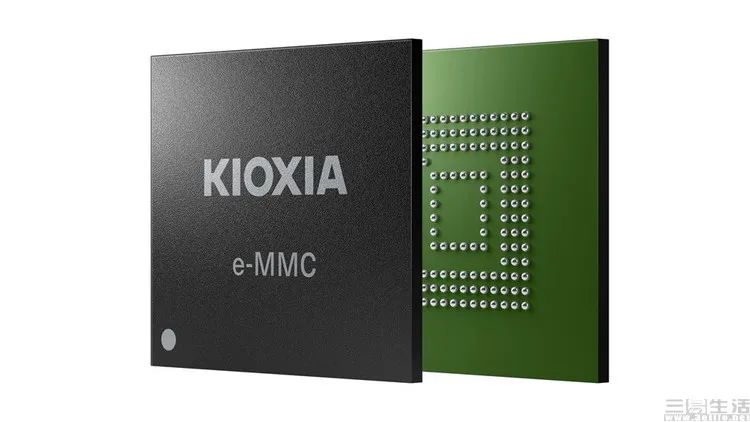When it comes to eMMC flash memory, what comes to mind first? Is it the non-mainstream manufacturers from years ago who took eMMC out of phones to use as “black chips” for solid-state drives in PCs? Or perhaps the earlier “flash memory scandal” that once stirred the mobile phone market?
However, these are all old stories that have long been “turned the page”. After all, in today’s smartphone market, even entry-level devices have adopted UFS 3.1 flash with the help of new platforms, or at least UFS 2.2. As for eMMC, it seems to have been forgotten by most consumers.
Therefore, when we at San Yi Life saw a news announcement at the end of August 2022 about Kioxia shipping the “latest eMMC 5.1 flash memory”, our first reaction was to think the website had malfunctioned and brought up an old news item from years ago.
After all, aside from the confusing title and content, phrases like “higher reliability during customer manufacturing process / before sending back” and “automatic sleep time reduced by 100×6 compared to the previous generation” are clearly “machine translations” and leave people completely guessing their original meaning.
Obvious signs of machine translation leave people baffled
Of course, the key point is this sentence: “Supports faster interface rates with the JEDEC eMMC 5.1 standard (HS400)”. A quick search reveals this is an industry technical standard published on October 1, 2013. Its existence makes this announcement seem more like a webpage data error.
However, upon tracing the source of this announcement, we found that it was indeed not an old news item mistakenly sent out, but rather that the renowned flash memory inventor, the former Toshiba flash division (now Kioxia), actually launched a batch of eMMC 5.1 flash products based on a 9-year-old industry technical standard at the end of August 2022.
At this point, are you as confused as we are? So the question arises, why are manufacturers still releasing eMMC flash, especially using the eMMC 5.1 standard from 9 years ago?
First, let’s take a look at the information regarding Kioxia’s new products. According to the original press release, this batch of eMMC 5.1 flash comes from Kioxia’s European branch. The interface standard it is based on is indeed the 9-year-old eMMC 5.1 HS400, meaning that these flash chips theoretically have a maximum read/write speed of 400MB/s (though in reality, they won’t reach that). Clearly, such performance is inadequate for today’s smartphones or tablets.
It can be clearly seen on Kioxia’s official website that they are still releasing eMMC flash, and some products are using new technologies
However, these flashes are not entirely based on the outdated technology from 9 years ago, as they use the eMMC 5.1 interface but have some “new features” in the technical details.
For instance, they utilize Kioxia’s currently leading BiCS technology, commonly known as “3D stacked flash”. Compared to the planar flash used in previous eMMC solutions, BiCS has significantly increased capacity density, allowing Kioxia’s “2022 version” of eMMC 5.1 to achieve capacities of 64/128GB per chip. In contrast, planar flash eMMC chips only had capacities of 8-32GB, which is a significant improvement.
Secondly, due to the use of a new underlying structure, the newly released eMMC 5.1 flash also features lower write amplification (which means longer write lifespans) and can support parallel read/write with multiple flash chips. Finally, the delay in transitioning from idle state to automatic sleep mode has been reduced from 200 milliseconds in older products to just 2 milliseconds, a 100-fold improvement, which can save additional energy.
To put it simply, it’s like using a 3nm process and the latest ARM v9 architecture to create a single-core mobile SoC with a clock speed of only 1GHz. You could argue that its performance is strong, but it certainly won’t be too powerful. However, if you compare it to products from the single-core era, there’s definitely been considerable progress.
The question remains, what is the significance of such a “2022 version” of eMMC 5.1 flash that is “recreated” using 2022 technology?
In fact, although we mentioned earlier that today’s mainstream smartphones obviously look down on this kind of “modernized eMMC” because to utilize the performance of 5G networks, the flash memory speed must exceed the network download bandwidth. Currently, the download bandwidth of 5G networks is 1Gbps, so the storage’s random write speed must be at least 128MB/s, which is why they cannot use eMMC 5.1 flash.
However, devices with such high download requirements are few. For devices like smartwatches, health monitoring devices, and industrial IoT terminals, on one hand, older, smaller capacity, and shorter lifespan eMMC 4.5 and eMMC 5.1 flash are indeed becoming obsolete, but on the other hand, it would be a waste to equip them with the latest UFS 3.1 or even UFS 4.0.
In this context, using the latest flash technology foundation while still being compatible with old interface standards, the “2022 version of eMMC 5.1” becomes a very reasonable choice from all aspects.
[Images in this article are sourced from the internet]
iPhone 14 Series Launches at Discount! Up to 500 Yuan Off
iPhone 14 series officially launched starting from 5999 Yuan
August Android Phone Performance Rankings: Snapdragon 8+ Dominates Flagships, Dimensity 8 Series Counterattacks Mid-range
August iOS Device Performance Rankings: iPad Takes 8 Spots, iPhone Ranked 5th Highest
